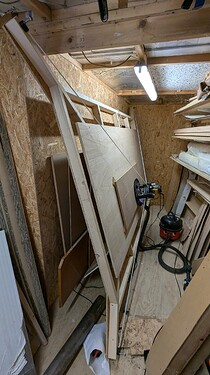Hi folks, After a bit of a break from using the maslow, I’ve rearranged the workshop and set it up in it’s own space and giving it a proper go. Having had several painful days with the original calibrations I stiffened up my frame with OSB just incase that was part the issue.
A new calibration with the latest firmware seemed to go ok, though I’m still not really sure what a good set of numbers looks like. I’ve then attempted a simple MDF template, Gcode generated in KrabzCAM, cutting with a single flute spiral style cutter, straight off the first pass (~3mm) was looking disappointing, then it stopped before getting back to the start for a second pass.
you can see the straight lines are really wavy, +/- more than 1mm. and the corner in the picture should be sharp.
Before I get lost in the cycle of calibrations and more testing any pointers from the community would be great.
I’m questioning things like the height difference between calibration and the real run.
Do my anchors need to be level with the working face? should I calibrate on a piece of material the right thickness rather than my bed?
Prior to stiffening the frame, the results weren’t that bad. Though I only tried one engraved text design so not really like for like. Still I was pleased. the main issue on this one was it failed to complete and seemed to crash before completing the Gcode. one or two passes before the end.
Any thoughts on failure to complete programmes? I didn’t see anything significant in the output log, maybe because it crashed.









